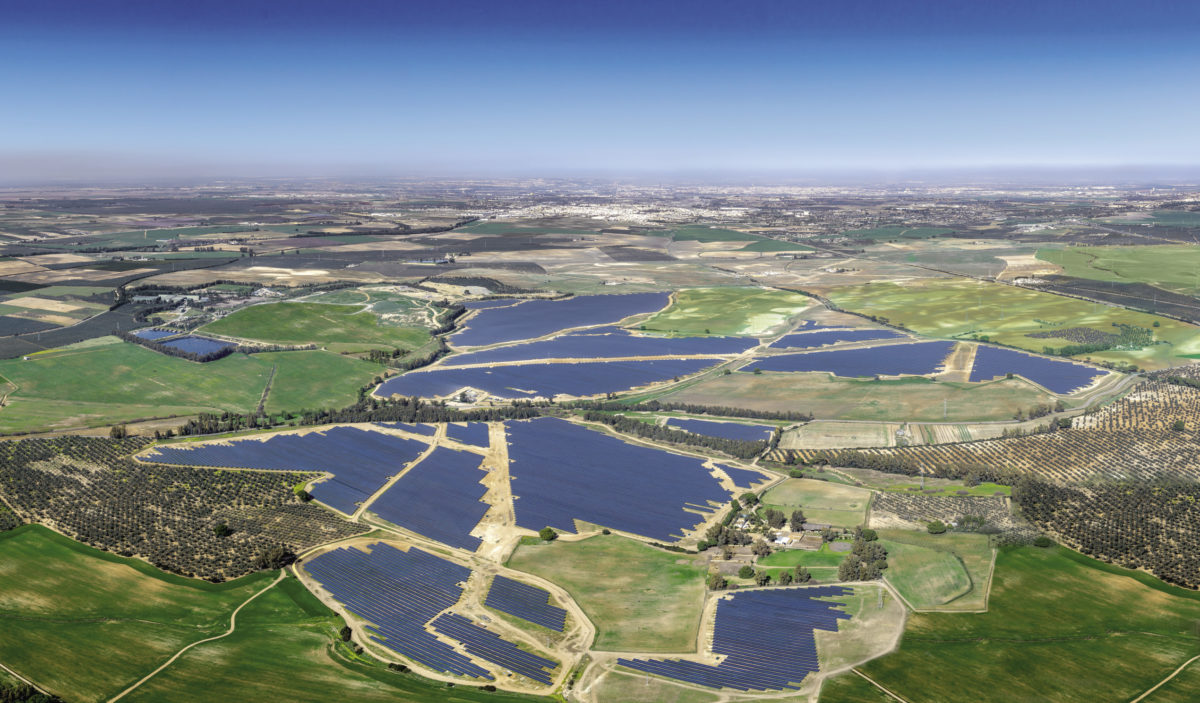From pv magazine 09/2021
Significant market price fluctuations and risks will threaten investor appetite, potentially hurting the long-term large-scale deployment of solar power. This has already been seen in California, with Karen Edson’s notorious 2012 “duck curve” showing the disconnect between generation and demand. Already, increases in renewable energy penetration in the state, as high as 26% of the energy market, have resulted in returns lowered by around 30%.
Jenny Chase, head of solar at BloombergNEF, believes this is a significant issue for every market seeing rapid solar penetration, and a threat to a subsidy-free solar future. “Large-scale solar generation depresses power prices, which can hit zero or even negative points during sunny periods,” said Chase. “This is not an imaginary problem, and it’s not a market design problem – the only way to solve this is to shift demand.”
Michele Scolaro, senior analyst at Aurora Energy Research, agrees that price cannibalization is a risk for developers of subsidy-free solar projects. “Due to its nature, price cannibalization has first hit the markets where the business case for merchant projects was stronger, as the penetration of solar PV increased and eroded the revenues captured by the assets,” Scolaro told pv magazine.
PPA mitigation
One obvious solution is power purchase agreements (PPAs). Under these contracts, the price risk is partly transferred to the offtaker, facilitating the financing of the project as well. For renewable energy developers like BayWa r.e., most of the corporate PPAs they undertake are subsidy-free, meaning that the company is exposed to market fluctuations.
Benedikt Ortmann, global head of solar projects at BayWa r.e., said curtailment and negative pricing are concerns. However, he pointed out that normal market fluctuations depend on so many variables at any one time across the overall electricity market. The reality is that solar developers are “the generators producing the cheapest source of electricity.” Ortmann added that there are already measures in place to counter these market challenges.
LevelTen Energy produces the P25 index, a quarterly update on PPA prices. It showed Spain to be the most rapidly growing market in Europe in the second quarter of this year, taking over from Italy in the first quarter. One in three offers on its marketplace were for Spanish projects. A change in average PPA pricing triggered the latest cannibalization discussion. In the second quarter of 2021, renewable PPA prices for Europe held largely steady, as in recent previous quarters, but Spanish P25 solar PPA offer prices fell 10.3% to reach €30.50/MWh.
The reasons for the fall in Spanish project prices range from the obvious, including an abundance of resource during midday hours, to a maturing industry with a strong pipeline, plus competition. Luis López-Polín, senior business development manager at LevelTen Energy, said that another factor is that an increasing number of corporates are using the competitiveness of the Spanish markets to get a pan-European PPA on favorable terms.
Chase agrees that project lifetime PPAs provide a different experience to the spot market, but warns that increasingly, buyers are aware of the potential price differential and are looking at short-term contracts at around €35/MWh. “You have to be really optimistic about the residual value in the investment,” she said.
It’s not all bad news, however. For example, Danish P25 solar PPA offer prices rose more than 14% in the second quarter. “Investors into merchant-based solar may see this as a short-term worry today,” said Harald Överholm, CEO of Nordic PPA provider Alight. “We’re not experiencing this as a major investor issue in Northern Europe, and not for the contracted solar build-out that represents most of the solar deployment in these markets.”
Georgios Gkiaouris, regional head of the European Bank for Reconstruction and Development, said that while price cannibalization is not yet being seen in the EBRD region, the bank does expect to see it if the electricity price continues to be set by marginal cost. “We expect the capture price will be lower than the average wholesale price,” he said. “Our projects have a 20 to 25 year lifetime so we’re already taking this into account.”
Like other risks though, price cannibalization can be addressed. “It is important for developers to quantify this risk,” Scolaro said. “Price cannibalization will impact markets … depending on factors such as solar PV penetration, size of the market, interconnection to neighboring markets, and so on.”
The probability of curtailment and negative pricing are already being built into project cashflow estimates. Mike Bammel, managing director of JLL Valuation Advisory, said that all investors want the highest price for the lowest risk. While Bammel admits to having seen a drop in return on solar, he’s hesitant to put a concrete figure on it. He emphasized that it is necessary to take a longer-term perspective, especially regarding growing pressure in the U.S. market from carbon and ESG concerns from investors intent on protecting or improving their climate position.
Sector coupling
Dan Bates, CEO of clean energy supplier Rebel Energy, said that solar must be looked at as part of a greater whole. He says, “Solar is part of a bigger picture – the question is how it combines with wind, batteries, EVs, and so on,” he noted.
The next solution to the cannibalization problem is revenue stacking, with storage a key differentiator. “Cannibalization will happen, and its effect will remain with us. Therefore, looking into the future, we need to channel investments into innovative technologies designed to provide flexibility measures,” said Merce Labordona, senior policy analyst at SolarPowerEurope. “We should maximize sector coupling, adopt the right mechanisms to encourage renewable energy generation to respond to market signals for flexibility, and provide incentives to end-users to absorb oversupply.”
A smart grid with storage can allow for demand shift and aggregation, while sector coupling of combined projects from desalination, water treatment, agriculture, local deliveries with EVs, and more could be transformational.
Ortmann is clear in his belief that the market will respond to quality over time. In terms of environmental impact, durability, and price, he believes that solar still beats alternatives. While batteries mean a higher capex for solar projects, BayWa r.e., for example, is already applying for battery permits with its plants, even if they’re not planning on immediately integrating storage.
Gkiaouris said that in many markets, an integration focus should be on connectors, system balance, and rule synchronization. In addressing cannibalization, however, the market needs to see new business models and explorations of how solar plants can be remunerated, dependent on storage, carbon costs, and potential changes in system pricing.
This is increasingly important as the question of cost and value is being reassessed in many sectors, beyond the potential impact of carbon. The New York State Energy Research and Development Authority, for example, already has policies in place to take social benefits such as cleaner air into consideration with pricing. This will play out in the utility market, rather than the wholesale market, and is going to become increasingly important as solar builds out in the United States. The federal Energy Information Administration’s long-term plan is for 45 GW of solar, at about 50% of new capacity additions. The continuation of the local production tax credit (PTC) is also going to be beneficial for longer-term stable U.S. solar growth.
Regulatory risk plays an important role in the solar market and the biggest danger is a change in thought leadership. “Generally there is a push for action, although how the powers that be implement necessary changes can be challenging,” said Bammel. He adds that regulatory risk is simply one of many market risks, with new or renewed government support in regions that must do more for climate ambitions a positive upside consideration.
While there are reasonable concerns about cannibalization, Ortmann said, these are the challenges that come with a more mature market. Identifying and addressing market risk is a positive and necessary step. The carbon price is already playing a significant role in the growth of solar PPAs and the days of selling green certificates and electricity separately seem a distant memory.
No matter what happens there is so much emphasis on decarbonization that LevelTen’s López-Polín believes that governments and the sector will find a way to continue the rollout. He added that we are looking at a fundamental shift in market dynamics – corporate PPAs are being signed because of long-term sustainability targets and it is still uncertain whether cannibalization will have a major impact or not.
Chase, meanwhile, warned that investors today must be optimists to fund solar: “We all have to be optimists in order to have a future.”
By Felicia Jackson
This content is protected by copyright and may not be reused. If you want to cooperate with us and would like to reuse some of our content, please contact: editors@pv-magazine.com.



Surely over the longer term this is the only way to drive fossil fuel generation out of business?
We are in a climate emergency, gas prices have hit Euro100/MWh & the measures proposed by a range of commentators tend revolve around a quasi steady-state situation where small changes are made (= exactly what SolarEurope was saying). Frankly this is pathetic, given the situation we are in. Solar needs to built out as rapidly as possible & there needs to be a central buying authority for electricity. More will be revealed in the Euractive article by me (and others), this week.
Perhaps the title of your article and lead-in are meant to attract readers, but the concerns about price cannibalization seem over-rated. Even BNEF’s Jenny Chase, whom you cite, has called them “rubbish” on the Energy Transition Show with Chris Nelder. Declining prices do not necessarily mean declining revenues. (Just ask Walmart.) Yes, lower market prices for solar electricity mean lower per-unit revenues, but those lower market prices also mean larger market share, as renewables drive competitors out of the market. Lower market prices increase demand, encouraging more people to electrify their heating and transportation and more industries to electrify their industrial processes. Moreover, electricity markets are artificial constructs. If all else fails and solar electricity is still not profitable for investors, utility regulators will do what they’ve been doing for decades: place a floor on prices by guaranteeing a specific rate of return to investors.
There are simply more interconnectors neccesary – e.g. directly from spain to italy (and further east), to be able to deliver power to areas where the sun settles earlier (and to allow these areas to export power to spain when the sun goes up there early in the morning.
This also makes a lot of flexibility options available in the big euorpean general market.